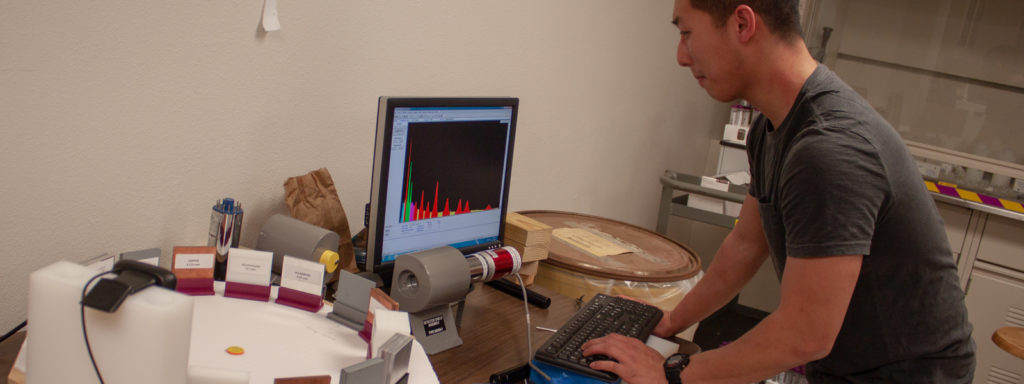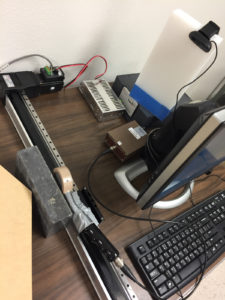
Performing radiation detection experiments is an essential part of the curriculum for nuclear engineering students. Laboratory sessions help students gain a better understanding of the physical processes involved in radiation detection. However, not all academic institutions have the means to provide the equipment or radiation sources necessary for such labs, and students taking distance education classes could miss out on an important practical education activity without access to this equipment.
Grant Emery, a master’s student with the Center for Nuclear Security Science and Policy Initiatives (NSSPI), has developed and tested a remotely accessible radiation detection laboratory system with his advisor NSSPI Deputy Director and Assistant Professor of nuclear engineering Dr. Craig Marianno.
“The main attraction of this system is its remote control capability,” says Emery. “Students can connect to the system and perform experiments–set up by a lab TA in advance–from anywhere, so long as they have a sufficient internet connection to the Texas A&M University network.”
The system consists of a host computer with radiation detection software and LabVIEW, along with various peripherals– such as radiation detectors and motorized components–that can be swapped out as required by the experiment. The motor components include a linear slide, along which a detector or sample may be moved, and a rotary table, most commonly used for selecting among a
number of samples. The system is designed so that further components can be added as necessary.
In order to demonstrate the system, Emery adapted three lab experiments to be performed on the system, and then carried those out remotely. These included gamma source identification, uranium enrichment estimation, and Geiger-Müller detector usage.

Jonathan Chen, Chase Sitzmann, Kristie Kallgren, and Kathy Tran, all undergraduate students working with Dr. Marianno, are continuing Emery’s work in order to adapt even more experiments for use with the system. The students have completed a lab on gas detector dead time, as well as an experiment to determine the attenuation coefficients for lead, aluminum, copper and polyethylene.
Emery earned his B.S. in Engineering Physics from Colorado School of Mines in 2014. He successfully defended his thesis in November of 2017 and is graduating with an M.S. in nuclear engineering from Texas A&M University in May of 2018. He is currently working for the National Nuclear Security Administration NNSA as a graduate fellow as part of the NNSA Graduate Fellowship Program.